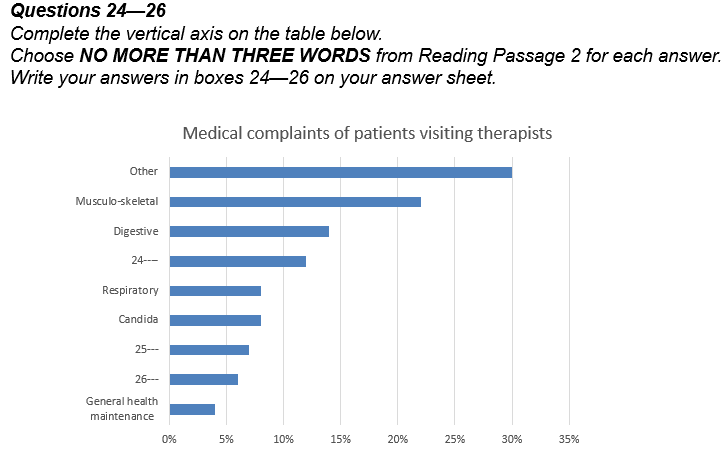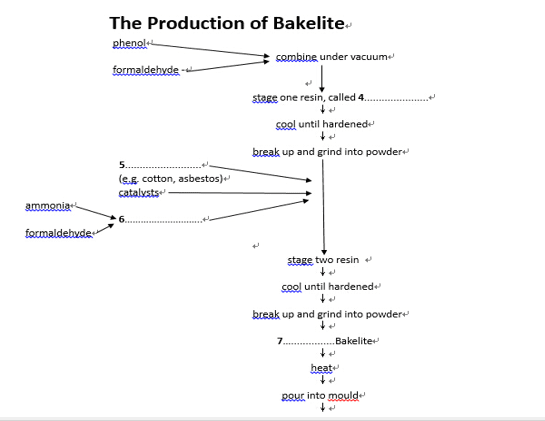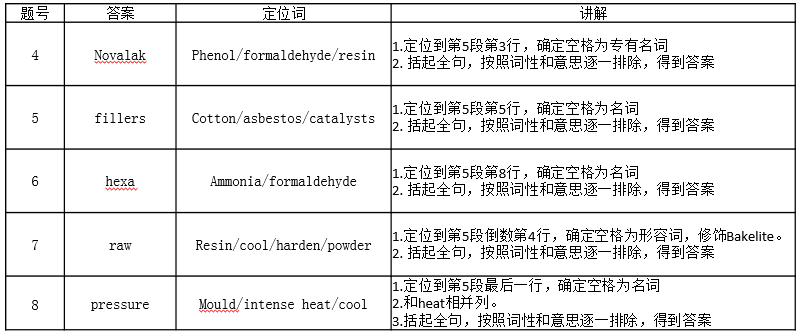雅思阅读表格填空题讲解:AlternativeMedicineinAustralia.
一切患有雅思阅读刷题强迫症的烤鸭,请看这里。下面小编给大家带来了雅思阅读表格填空题讲解L:Alternative Medicine in Australia,希望能够帮助到大家,下面小编就和大家分享,来欣赏一下吧
雅思阅读表格填空题讲解--Alternative Medicine in Australia.
alternative Medicine in Australia
The first students to study alternative medicine at university level in Australia began their four-year, full-time course at the University of Technology Sydney, in early 1994. Their course covered, among other therapies, acupuncture. The theory they learnt is based on the traditional Chinese explanation of this ancient healing art that it can regulate the flow of ‘Qi’ or energy through pathways in the body. This course reflects how far some alternative therapies have come in their struggle for acceptance by the medical establishment.
Australia has been unusual in the Western world in having a very conservative attitude to natural or alternative therapies, according to Dr Paul Laver, a lecturer in Public Health at the University of Sydney. ‘We’ve had a tradition of doctors being fairly powerful and I guess they are pretty loath to allow any pretenders to their position to come into it.’ In many other industrialized countries, orthodox and alternative medicine have worked ‘hand in glove’ for years. In Europe, only orthodox doctors can prescribe herbal medicine. In Germany, plant remedies account for 10% of the national turnover of pharmaceuticals. Americans made more visits to alternative therapists than to orthodox doctors in 1990, and each year they spend about $US12 billion on therapies that have not been scientifically tested.
Disenchantment with orthodox medicine has seen the popularity of alternative therapies in Australia climb steadily during the past 20 years. In a 1983 national health survey, 1.9% of people said they had contacted a chiropractor, naturopath, osteopath, acupuncturist or herbalist in the two weeks prior to the survey. By 1990, this figure had risen to 2.6% of the population. The 550,000 consultations with alternative therapists reported in the 1990 survey represented about an eighth of the total number of consultations with medically qualified personnel covered by the survey, according to Dr Laver and colleagues writing in the Australian Journal of Public Health in1993. ‘A better educated and less accepting public has become disillusioned with the experts in general, and increasingly skeptical about science and empirically based knowledge,’ they said.‘The high standing of professionals, including doctors, has been eroded as a consequence.’
Rather than resisting or criticizing this trend, increasing numbers of Australian doctors, particularly younger ones, are forming group practices with alternative therapists or taking courses themselves, particularly in acupuncture and herbalism. Part of the incentive was financial, Dr Laver said. ‘ The bottom line is that most general practitioners are business people. If they see potential clientele going elsewhere, they might want to be able to offer a similar service.‘
In 1993, Dr Laver and his colleagues published a survey of 289 Sydney people who attended eight alternative therapists’ practices in Sydney. These practices offered a wide range of alternative therapies from 25 therapists. Those surveyed had experienced chronic illnesses, for which orthodox medicine had been able to provide little relief. They commented that they liked the holistic approach of their alternative therapists and the friendly, concerned and detailed attention they had received. The cold, impersonal manner of orthodox doctors featured in the survey. An increasing exodus from their clinics, coupled with this and a number of other relevant surveys carried out in Australia, all pointing to orthodox doctors’ inadequacies, have led mainstream doctors themselves to begin to admit they could learn from the personal style of alternative therapists. Dr Patrick Store, President of the Royal College of General Practitioners, concurs that orthodox doctors could learn a lot about bedside manner and advising patients on preventative health from alternative therapists.
According to the Australian Journal of Public Health, 18% of patients visiting
alternative therapists do so because they suffer from musculo-skeletal complaints, 12% suffer from digestive problems, which is only 1% more than those suffering from emotional problems. Those suffering from respiratory complaints represent 7% of their patients, and candida sufferers represent an equal percentage. Headache sufferers and those complaining of general ill health represent 6% and 5% of patients respectively and a further 4% see therapists for general health maintenance. The survey suggested that complementary medicine is probably a better term than alternative medicine. Alternative medicine appears to be an adjunct sought in times of disenchantment when conventional medicine seems not to offer the answer.
真题讲解:

长难句练习:
1. ‘We’ve had a tradition of doctors being fairly powerful and I guess they are pretty loath to allow any pretenders to their position to come into it.’
参考译文:我们有个传统,医生是相当权威的,我猜他们很不愿意让那些觊觎他们位置的冒牌货得逞。
知识点:在这句话当中,being fairly powerful是现在分词作定语来修饰doctors。
2. The 550,000 consultations with alternative therapists reported in the 1990 survey represented about an eighth of the total number of consultations with medically qualified personnel covered by the survey, according to Dr Laver and colleagues writing in the Australian Journal of Public Health in 1993.
参考译文:据 Laver 博士和他的同事在 1993 年的《澳大利亚公共卫生期刊》中所说,在 1990 年所作的报告中,55 万人对替代疗法专家进行过咨询,占据着这次调查所涉及到的对医疗合格人员的咨询总数量的八分之一。
知识点:这句话的主语是consultations, reported是过去分词作定语,修饰consultations。谓语是represented,宾语是an eighth of the total number of consultations。
3. An increasing exodus from their clinics, coupled with this and a number of other relevant surveys carried out in Australia, all pointing to orthodox doctors’ inadequacies, have led mainstream doctors themselves to begin to admit they could learn from the personal style of alternative therapists.
参考译文:病人从诊所中大批离去,加上其他一些相关的全国性调查的结果,矛头直指正统医师的不足之处,这就使得他们开始承认应该学习一下另类疗法医师的亲切态度。
知识点:exodus以及this and a number of other relevant surveys是主语,谓语是have led--- to---, all pointing to---则是现在分词作定语,来限定主语。
雅思阅读流程图填空题讲解--BAKELITE
BAKELITE
The birth of modem plastics
In 1907, Leo Hendrick Baekeland, a Belgian scientist working in New York, discovered and patented a revolutionary new synthetic material. His invention, which he named ‘Bakelite’, was of enormous technological importance, and effectively launched the modern plastics industry.
The term ‘plastic’ comes from the Greek plassein, meaning ‘to mould’. Some plastics are derived from natural sources, some are semi-synthetic (the result of chemical action on a natural substance), and some are entirely synthetic, that is. chemically engineered from the constituents of coal or oil. Some are ‘thermoplastic’, which means that, like candlewax, they melt when heated and can then be reshaped. Others are thermosetting': like eggs, they cannot revert to their original viscous state, and their shape is thus fixed for ever. Bakelite had the distinction of being the first totally synthetic thermosetting plastic.
The history of today's plastics begins with the discovery of a series of semi-synthetic thermoplastic materials in the mid-nineteenth century. The impetus behind the development of these early plastics was generated by a number of factors - immense technological progress in the domain of chemistry, coupled with wider cultural changes, and the pragmatic need to find acceptable substitutes for dwindling supplies of 'luxury’ materials such as tortoiseshell and ivory.
Baekeland‘s interest in plastics began in 1885 when, as a young chemistry student in Belgium, he embarked on research into phenolic resins, the group of sticky substances produced when phenol (carbolic acid) combines with an aldehyde (a volatile fluid similar to alcohol). He soon abandoned the subject, however, only returning to it some years later. By 1905 he was a wealthy New Yorker, having recently made his fortune with the invention of a new photographic paper. While Baekeland had been busily amassing dollars, some advances had been made in the development of plastics. The years 1899 and 1900 had seen the patenting of the first semi-synthetic thermosetting material that could be manufactured on an industrial scale. In purely scientific terms, Baekeland’s major contribution to the field is not so much the actual discovery of the material to which he gave his name, but rather the method by which a reaction between phenol and formaldehyde could be controlled, thus making possible its preparation on a commercial basis. On 13 July 1907, Baekeland took out his famous patent describing this preparation, the essential features of which are still in use today.
The original patent outlined a three-stage process, in which phenol and formaldehyde (from wood or coal) were initially combined under vacuum inside a large egg-shaped kettle. The result was a resin known as Novalak, which became soluble and malleable when heated. The resin was allowed to cool in shallow trays until it hardened, and then broken up and ground into powder. Other substances were then introduced: including fillers, such as woodflour, asbestos or cotton, which increase strength and moisture resistance, catalysts (substances to speed up the reaction between two chemicals without joining to either) and hexa, a compound of ammonia and formaldehyde which supplied the additional formaldehyde necessary to form a thermosetting resin. This resin was then left to cool and harden, and ground up a second time. The resulting granular powder was raw Bakelite, ready to be made into a vast range of manufactured objects. In the last stage, the heated Bakelite was poured into a hollow mould of the required shape and subjected to extreme heat and pressure


长难句练习:
1. In purely scientific terms, Baekeland's major contribution to the field is not so much the actual discovery of the material to which he gave his name, but rather the method by which a reaction between phenol and formaldehyde could be controlled, thus making possible its preparation on a commercial basis.
参考译文:纯粹地从科学方面来讲,Baekeland对这个领域的主要贡献,并不是实际地发现了这个用他的名字命名的材料,而是控制苯酚和甲醛之间的反应的方法,这个被控制了的反应能够使其化学配制建立在商业利用的基础之上。
知识点:
1)not---but rather---: 不是---而是---
2)not so much---as---: 与其说---不如说---
2. Baekeland's invention, although treated with disdain in its early years, went on to enjoy an unparalleled popularity which lasted throughout the first half of the twentieth century.
参考译文:在最初的年头里尽管被人所轻视Baekeland的发明一直受到前所未有的欢迎这种流行持续并贯穿了二十世纪上半叶。
知识点:
1)disdain:鄙视、蔑视
2)parallel的用法:
提供与---相似或相当之物与 ---相似:比得上
, thereby ‘setting’ its form for life.
